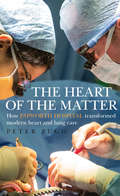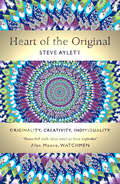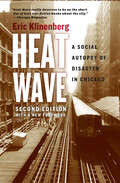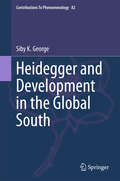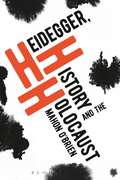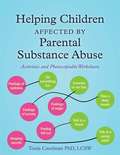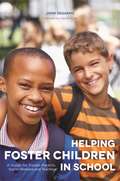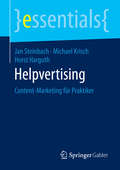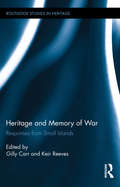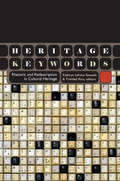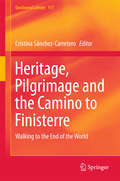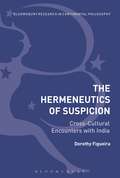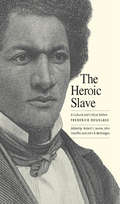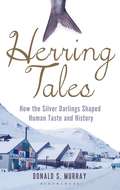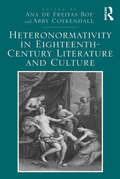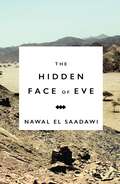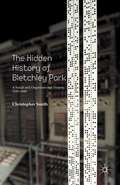- Table View
- List View
The Heart of the Matter: How Papworth Hospital transformed modern heart and lung care
by Peter PughPapworth Hospital in Cambridgeshire, founded in 1916 to tackle the great killer disease of tuberculosis, is famous for carrying out the UK’s first heart transplant operation in 1979. It followed this up not only with many other heart transplants but also with the UK’s first heart and lung operation in 1984 and the world’s first heart, lung and liver transplant in 1986. With unique access to Papworth’s archives, historian Peter Pugh here tells the story of this ground-breaking hospital for the first time. Alongside the background to that first UK heart transplant – and the ethical controversies that surrounded it – Pugh explores the opposition to heart operations in general, Papworth's difficulties dealing with NHS authorities especially over funding, and the discussions for over 50 years as to whether the hospital should move alongside Addenbrooke's hospital in Cambridge. As an insight into the history of medicine and surgery in the UK, as well as a story literally of life and death, The Heart of the Matter will be compelling reading.
Heart of the Original
by Steve AylettTrue creativity, the making of a thing which has not been in the world previously, is originality by definition. But while many claim to crave originality, they feel an obscure revulsion when confronted with it. The really new is uncomfortable and disturbing. Repetition of the familiar is preferred. The hailing of old ideas as original lowers the standard for invention and robs most creative people of the drive to do anything interesting, let alone seek out the universe of originality which is waiting, drumming its fingers, wondering why nobody calls. This is a book for all those who care not for the fashionable simulacra of the media creative, but for an understanding of the hard road to true originality. Part manual, part history of ideas, part manifesto – this a unique experimental journey around the outer limits of our culture. It debunks myths, contradicts familiar shiboleths and wages war on cliché and platitude as it has never been waged before. A rallying cry and disruptive book for those bored with merely thinking outside the box.
Heat Wave: A Social Autopsy of Disaster in Chicago
by Eric KlinenbergOn Thursday, July 13, 1995, Chicagoans awoke to a blistering day in which the temperature would reach 106 degrees. The heat index, which measures how the temperature actually feels on the body, would hit 126 degrees by the time the day was over. Meteorologists had been warning residents about a two-day heat wave, but these temperatures did not end that soon. When the heat wave broke a week later, city streets had buckled; the records for electrical use were shattered; and power grids had failed, leaving residents without electricity for up to two days. And by July 20, over seven hundred people had perished-more than twice the number that died in the Chicago Fire of 1871, twenty times the number of those struck by Hurricane Andrew in 1992—in the great Chicago heat wave, one of the deadliest in American history. Heat waves in the United States kill more people during a typical year than all other natural disasters combined. Until now, no one could explain either the overwhelming number or the heartbreaking manner of the deaths resulting from the 1995 Chicago heat wave. Meteorologists and medical scientists have been unable to account for the scale of the trauma, and political officials have puzzled over the sources of the city's vulnerability. In Heat Wave, Eric Klinenberg takes us inside the anatomy of the metropolis to conduct what he calls a "social autopsy," examining the social, political, and institutional organs of the city that made this urban disaster so much worse than it ought to have been. Starting with the question of why so many people died at home alone, Klinenberg investigates why some neighborhoods experienced greater mortality than others, how the city government responded to the crisis, and how journalists, scientists, and public officials reported on and explained these events. Through a combination of years of fieldwork, extensive interviews, and archival research, Klinenberg uncovers how a number of surprising and unsettling forms of social breakdown—including the literal and social isolation of seniors, the institutional abandonment of poor neighborhoods, and the retrenchment of public assistance programs—contributed to the high fatality rates. The human catastrophe, he argues, cannot simply be blamed on the failures of any particular individuals or organizations. For when hundreds of people die behind locked doors and sealed windows, out of contact with friends, family, community groups, and public agencies, everyone is implicated in their demise. As Klinenberg demonstrates in this incisive and gripping account of the contemporary urban condition, the widening cracks in the social foundations of American cities that the 1995 Chicago heat wave made visible have by no means subsided as the temperatures returned to normal. The forces that affected Chicago so disastrously remain in play in America's cities, and we ignore them at our peril. For the Second Edition Klinenberg has added a new Preface showing how climate change has made extreme weather events in urban centers a major challenge for cities and nations across our planet, one that will require commitment to climate-proofing changes to infrastructure rather than just relief responses.
Heat Wave: A Social Autopsy of Disaster in Chicago
by Eric KlinenbergOn Thursday, July 13, 1995, Chicagoans awoke to a blistering day in which the temperature would reach 106 degrees. The heat index, which measures how the temperature actually feels on the body, would hit 126 degrees by the time the day was over. Meteorologists had been warning residents about a two-day heat wave, but these temperatures did not end that soon. When the heat wave broke a week later, city streets had buckled; the records for electrical use were shattered; and power grids had failed, leaving residents without electricity for up to two days. And by July 20, over seven hundred people had perished-more than twice the number that died in the Chicago Fire of 1871, twenty times the number of those struck by Hurricane Andrew in 1992—in the great Chicago heat wave, one of the deadliest in American history. Heat waves in the United States kill more people during a typical year than all other natural disasters combined. Until now, no one could explain either the overwhelming number or the heartbreaking manner of the deaths resulting from the 1995 Chicago heat wave. Meteorologists and medical scientists have been unable to account for the scale of the trauma, and political officials have puzzled over the sources of the city's vulnerability. In Heat Wave, Eric Klinenberg takes us inside the anatomy of the metropolis to conduct what he calls a "social autopsy," examining the social, political, and institutional organs of the city that made this urban disaster so much worse than it ought to have been. Starting with the question of why so many people died at home alone, Klinenberg investigates why some neighborhoods experienced greater mortality than others, how the city government responded to the crisis, and how journalists, scientists, and public officials reported on and explained these events. Through a combination of years of fieldwork, extensive interviews, and archival research, Klinenberg uncovers how a number of surprising and unsettling forms of social breakdown—including the literal and social isolation of seniors, the institutional abandonment of poor neighborhoods, and the retrenchment of public assistance programs—contributed to the high fatality rates. The human catastrophe, he argues, cannot simply be blamed on the failures of any particular individuals or organizations. For when hundreds of people die behind locked doors and sealed windows, out of contact with friends, family, community groups, and public agencies, everyone is implicated in their demise. As Klinenberg demonstrates in this incisive and gripping account of the contemporary urban condition, the widening cracks in the social foundations of American cities that the 1995 Chicago heat wave made visible have by no means subsided as the temperatures returned to normal. The forces that affected Chicago so disastrously remain in play in America's cities, and we ignore them at our peril. For the Second Edition Klinenberg has added a new Preface showing how climate change has made extreme weather events in urban centers a major challenge for cities and nations across our planet, one that will require commitment to climate-proofing changes to infrastructure rather than just relief responses.
Heat Wave: A Social Autopsy of Disaster in Chicago
by Eric KlinenbergOn Thursday, July 13, 1995, Chicagoans awoke to a blistering day in which the temperature would reach 106 degrees. The heat index, which measures how the temperature actually feels on the body, would hit 126 degrees by the time the day was over. Meteorologists had been warning residents about a two-day heat wave, but these temperatures did not end that soon. When the heat wave broke a week later, city streets had buckled; the records for electrical use were shattered; and power grids had failed, leaving residents without electricity for up to two days. And by July 20, over seven hundred people had perished-more than twice the number that died in the Chicago Fire of 1871, twenty times the number of those struck by Hurricane Andrew in 1992—in the great Chicago heat wave, one of the deadliest in American history. Heat waves in the United States kill more people during a typical year than all other natural disasters combined. Until now, no one could explain either the overwhelming number or the heartbreaking manner of the deaths resulting from the 1995 Chicago heat wave. Meteorologists and medical scientists have been unable to account for the scale of the trauma, and political officials have puzzled over the sources of the city's vulnerability. In Heat Wave, Eric Klinenberg takes us inside the anatomy of the metropolis to conduct what he calls a "social autopsy," examining the social, political, and institutional organs of the city that made this urban disaster so much worse than it ought to have been. Starting with the question of why so many people died at home alone, Klinenberg investigates why some neighborhoods experienced greater mortality than others, how the city government responded to the crisis, and how journalists, scientists, and public officials reported on and explained these events. Through a combination of years of fieldwork, extensive interviews, and archival research, Klinenberg uncovers how a number of surprising and unsettling forms of social breakdown—including the literal and social isolation of seniors, the institutional abandonment of poor neighborhoods, and the retrenchment of public assistance programs—contributed to the high fatality rates. The human catastrophe, he argues, cannot simply be blamed on the failures of any particular individuals or organizations. For when hundreds of people die behind locked doors and sealed windows, out of contact with friends, family, community groups, and public agencies, everyone is implicated in their demise. As Klinenberg demonstrates in this incisive and gripping account of the contemporary urban condition, the widening cracks in the social foundations of American cities that the 1995 Chicago heat wave made visible have by no means subsided as the temperatures returned to normal. The forces that affected Chicago so disastrously remain in play in America's cities, and we ignore them at our peril. For the Second Edition Klinenberg has added a new Preface showing how climate change has made extreme weather events in urban centers a major challenge for cities and nations across our planet, one that will require commitment to climate-proofing changes to infrastructure rather than just relief responses.
Heat Wave: A Social Autopsy of Disaster in Chicago
by Eric KlinenbergOn Thursday, July 13, 1995, Chicagoans awoke to a blistering day in which the temperature would reach 106 degrees. The heat index, which measures how the temperature actually feels on the body, would hit 126 degrees by the time the day was over. Meteorologists had been warning residents about a two-day heat wave, but these temperatures did not end that soon. When the heat wave broke a week later, city streets had buckled; the records for electrical use were shattered; and power grids had failed, leaving residents without electricity for up to two days. And by July 20, over seven hundred people had perished-more than twice the number that died in the Chicago Fire of 1871, twenty times the number of those struck by Hurricane Andrew in 1992—in the great Chicago heat wave, one of the deadliest in American history. Heat waves in the United States kill more people during a typical year than all other natural disasters combined. Until now, no one could explain either the overwhelming number or the heartbreaking manner of the deaths resulting from the 1995 Chicago heat wave. Meteorologists and medical scientists have been unable to account for the scale of the trauma, and political officials have puzzled over the sources of the city's vulnerability. In Heat Wave, Eric Klinenberg takes us inside the anatomy of the metropolis to conduct what he calls a "social autopsy," examining the social, political, and institutional organs of the city that made this urban disaster so much worse than it ought to have been. Starting with the question of why so many people died at home alone, Klinenberg investigates why some neighborhoods experienced greater mortality than others, how the city government responded to the crisis, and how journalists, scientists, and public officials reported on and explained these events. Through a combination of years of fieldwork, extensive interviews, and archival research, Klinenberg uncovers how a number of surprising and unsettling forms of social breakdown—including the literal and social isolation of seniors, the institutional abandonment of poor neighborhoods, and the retrenchment of public assistance programs—contributed to the high fatality rates. The human catastrophe, he argues, cannot simply be blamed on the failures of any particular individuals or organizations. For when hundreds of people die behind locked doors and sealed windows, out of contact with friends, family, community groups, and public agencies, everyone is implicated in their demise. As Klinenberg demonstrates in this incisive and gripping account of the contemporary urban condition, the widening cracks in the social foundations of American cities that the 1995 Chicago heat wave made visible have by no means subsided as the temperatures returned to normal. The forces that affected Chicago so disastrously remain in play in America's cities, and we ignore them at our peril. For the Second Edition Klinenberg has added a new Preface showing how climate change has made extreme weather events in urban centers a major challenge for cities and nations across our planet, one that will require commitment to climate-proofing changes to infrastructure rather than just relief responses.
Heidegger and Development in the Global South (Contributions to Phenomenology #82)
by Siby K. GeorgeTaking the Heideggerian critical ontology of technology as its base, this volume looks at postcolonial modernization and development in the global south as the worldwide expansion of the western metaphysical understanding of reality. We live today in an increasingly globalizing technological society that Martin Heidegger described in the middle of the last century as ‘the planetary imperialism of technologically organized man.’ Consequent upon this cultural-intellectual globalization, the ahistorical, violent, individualistic, calculative and capitalistic logic of the metaphysics of technology is permeating the life-world, even of the world’s poorest peoples, in ways they could neither choose nor control. This volume questions the political ethics and justice of post-war development discourse in the light of the egalitarian aims of modern societies, cultural freedom of communities and nations and the ecological limits of the planet. The final chapters discuss the alternative proposal of development as various conceptions of good life and equitable human flourishing amidst equally flourishing non-human life and non-living beings. This unique volume is the first book-length treatment of the ontology of modernization and development in the global south from a Heideggerian stance.
Heidegger, History and the Holocaust (Bloomsbury Studies in Continental Philosophy)
by Mahon O'BrienHeidegger, History and the Holocaust is an important contribution to the longstanding debate concerning Martin Heidegger's association with National Socialism. Although a difficult topic, this ambitious new work moves the entire debate on the Heidegger controversy forward. Following Being and Time Heidegger expands on his notion of authenticity and related notions such as historicity and discusses the possibility of an authentic Dasein of a people along structurally consistent lines to his account of authenticity in Being and Time. O'Brien argues that the same difficulties which appear to hamstring the early account of authenticity further affect the notion of an authentic Dasein of a people; Heidegger's political myopia in the thirties can thus be attributed to an underlying failure to come to terms with some of the difficulties discussed in this study. O'Brien concedes that Heidegger's philosophy is influenced by its historical period and context but argues that, however inflammatory, Heidegger's rhetoric cannot be simply reduced to crude Nazi jingoism. This book is a genuinely philosophical approach to the Heidegger controversy and a much-needed re-examination of his ideas and influences.
Heidegger, History and the Holocaust (Bloomsbury Studies in Continental Philosophy)
by Mahon O'BrienHeidegger, History and the Holocaust is an important contribution to the longstanding debate concerning Martin Heidegger's association with National Socialism. Although a difficult topic, this ambitious new work moves the entire debate on the Heidegger controversy forward. Following Being and Time Heidegger expands on his notion of authenticity and related notions such as historicity and discusses the possibility of an authentic Dasein of a people along structurally consistent lines to his account of authenticity in Being and Time. O'Brien argues that the same difficulties which appear to hamstring the early account of authenticity further affect the notion of an authentic Dasein of a people; Heidegger's political myopia in the thirties can thus be attributed to an underlying failure to come to terms with some of the difficulties discussed in this study. O'Brien concedes that Heidegger's philosophy is influenced by its historical period and context but argues that, however inflammatory, Heidegger's rhetoric cannot be simply reduced to crude Nazi jingoism. This book is a genuinely philosophical approach to the Heidegger controversy and a much-needed re-examination of his ideas and influences.
Helping Children Affected by Parental Substance Abuse: Activities and Photocopiable Worksheets (PDF)
by Tonia CaselmanThis practical resource provides a wealth of activities and photocopiable worksheets to use with children and young people affected by parental substance misuse. Children living in substance abusing homes are at risk of many different negative outcomes, such as behavioral problems, low academic achievement, depression and anxiety, low self-esteem, as well as self-blame for their parent's substance abuse. The activities and worksheets in this book have been designed to assist counselors, therapists and other professionals to facilitate group sessions for children of addicted parents. Each chapter reviews a different issue related to children living in substance abusing homes, and gives step-by-step instructions for leading a group session, accompanied by the latest research and suggestions for discussions based on best practices. Children will learn to reduce feelings of shame and isolation, better understand the nature of addiction, increase self-care and create healthy interactions. This is an essential resource for professionals working with children affected by parental substance misuse, including counselors, child psychologists, therapists, and youth workers.
Helping Foster Children In School: A Guide for Foster Parents, Social Workers and Teachers
by John DegarmoHelping Foster Children In School explores the challenges that foster children face in schools and offers positive and practical guidance tailored to help the parents, teachers and social workers supporting them. Children in care often perform poorly at school both in terms of their behavior and their academic performance, with many failing to complete their education. They will have often experienced trauma or neglect which can result in a number of developmental delays. By looking at why children in foster care do not perform as well as their counterparts, John DeGarmo, who has fostered more than 40 children, provides easy-to-use strategies to target the problems commonly faced. He emphasizes the importance of an open dialogue between teacher, parent and social worker, to ensure that everyone is working jointly to achieve the best outcome for the child. An invaluable resource for foster parents, social workers and educators alike, this book encourages a unified response to ensure foster children are given the best chance to succeed at school.
Helping Foster Children In School: A Guide for Foster Parents, Social Workers and Teachers (PDF)
by John DegarmoHelping Foster Children In School explores the challenges that foster children face in schools and offers positive and practical guidance tailored to help the parents, teachers and social workers supporting them. Children in care often perform poorly at school both in terms of their behavior and their academic performance, with many failing to complete their education. They will have often experienced trauma or neglect which can result in a number of developmental delays. By looking at why children in foster care do not perform as well as their counterparts, John DeGarmo, who has fostered more than 40 children, provides easy-to-use strategies to target the problems commonly faced. He emphasizes the importance of an open dialogue between teacher, parent and social worker, to ensure that everyone is working jointly to achieve the best outcome for the child. An invaluable resource for foster parents, social workers and educators alike, this book encourages a unified response to ensure foster children are given the best chance to succeed at school.
Helpvertising: Content-Marketing für Praktiker (essentials)
by Jan Steinbach Michael Krisch Horst HarguthJan Steinbach, Michael Krisch und Horst Harguth zeigen, dass es beim Content-Marketing weniger um die Unterbrechung durch Werbung, sondern vielmehr darum gehen sollte, hilfreiche Inhalte mit Mehrwert zu entwickeln. ‚Helpvertising‘ stellt dar, wie Sie diese Form des Marketings erfolgreich in Ihrer Unternehmenspraxis einsetzen können. Unterbrechende Werbung soll dazu dienen, die Aufmerksamkeit auf die Produkte und Leistungen zu lenken und ein Kaufbedürfnis auszulösen. Diese Form des Marketings ist für Kunden nicht sonderlich attraktiv und für Unternehmen immer ineffizienter. Im digitalen Zeitalter wollen Menschen zunehmend selbst entscheiden, ob, wo, wann und wie sie mit Unternehmen interagieren. Daher benötigen wir im Marketing eine neue Denkweise. Die Autoren nennen diesen Ansatz Helpvertising.
Heritage and Memory of War: Responses from Small Islands (Contributions To Global Historical Archaeology Ser. #1)
by Gilly Carr Keir ReevesEvery large nation in the world was directly or indirectly affected by the impact of war during the course of the twentieth century, and while the historical narratives of war of these nations are well known, far less is understood about how small islands coped. These islands – often not nations in their own right but small outposts of other kingdoms, countries, and nations – have been relegated to mere footnotes in history and heritage studies as interesting case studies or unimportant curiosities. Yet for many of these small islands, war had an enduring impact on their history, memory, intangible heritage and future cultural practices, leaving a legacy that demanded some form of local response. This is the first comprehensive volume dedicated to what the memories, legacies and heritage of war in small islands can teach those who live outside them, through closely related historical and contemporary case studies covering 20th and 21st century conflict across the globe. The volume investigates a number of important questions: Why and how is war memory so enduring in small islands? Do factors such as population size, island size, isolation or geography have any impact? Do close ties of kinship and group identity enable collective memories to shape identity and its resulting war-related heritage? This book contributes to heritage and memory studies and to conflict and historical archaeology by providing a globally wide-ranging comparative assessment of small islands and their experiences of war. Heritage of War in Small Island Territories is of relevance to students, researchers, heritage and tourism professionals, local governments, and NGOs.
Heritage and Memory of War: Responses from Small Islands
by Gilly Carr Keir ReevesEvery large nation in the world was directly or indirectly affected by the impact of war during the course of the twentieth century, and while the historical narratives of war of these nations are well known, far less is understood about how small islands coped. These islands – often not nations in their own right but small outposts of other kingdoms, countries, and nations – have been relegated to mere footnotes in history and heritage studies as interesting case studies or unimportant curiosities. Yet for many of these small islands, war had an enduring impact on their history, memory, intangible heritage and future cultural practices, leaving a legacy that demanded some form of local response. This is the first comprehensive volume dedicated to what the memories, legacies and heritage of war in small islands can teach those who live outside them, through closely related historical and contemporary case studies covering 20th and 21st century conflict across the globe. The volume investigates a number of important questions: Why and how is war memory so enduring in small islands? Do factors such as population size, island size, isolation or geography have any impact? Do close ties of kinship and group identity enable collective memories to shape identity and its resulting war-related heritage? This book contributes to heritage and memory studies and to conflict and historical archaeology by providing a globally wide-ranging comparative assessment of small islands and their experiences of war. Heritage of War in Small Island Territories is of relevance to students, researchers, heritage and tourism professionals, local governments, and NGOs.
Heritage Keywords: Rhetoric and Redescription in Cultural Heritage
by Trinidad Rico Kathryn Lafrenz SamuelsSituated at the intersection of scholarship and practice, Heritage Keywords positions cultural heritage as a transformative tool for social change. This volume unlocks the persuasive power of cultural heritage—as it shapes experiences of change and crafts present and future possibilities from historic conditions—by offering new ways forward for cultivating positive change and social justice in contemporary social debates and struggles. It draws inspiration from deliberative democratic practice, with its focus on rhetoric and redescription, to complement participatory turns in recent heritage work. Through attention to the rhetorical edge of cultural heritage, contributors to this volume offer innovative reworkings of critical heritage categories. Each of the fifteen chapters examines a key term from the field of heritage practice—authenticity, civil society, cultural diversity, cultural property, democratization, difficult heritage, discourse, equity, intangible heritage, memory, natural heritage, place, risk, rights, and sustainability—to showcase the creative potential of cultural heritage as it becomes mobilized within a wide array of social, political, economic, and moral contexts. This highly readable collection will be of interest to students, scholars, and professionals in heritage studies, cultural resource management, public archaeology, historic preservation, and related cultural policy fields. Contributors include Jeffrey Adams, Sigrid Van der Auwera, Melissa F. Baird, Alexander Bauer, Malcolm A. Cooper, Anna Karlström, Paul J. Lane, Alicia Ebbitt McGill, Gabriel Moshenska, Regis Pecos, Robert Preucel, Trinidad Rico, Cecelia Rodéhn, Joshua Samuels, Kathryn Lafrenz Samuels, and Klaus Zehbe.
Heritage, Pilgrimage and the Camino to Finisterre: Walking to the End of the World (GeoJournal Library #117)
by Cristina Sánchez-CarreteroThis book presents research concerning the effects of the Camino to Finisterre on the daily lives of the populations who live along the route, and the heritagization processes that exploitation of the Camino for tourism purposes involves. Rather than focusing on the route to Santiago de Compostela and the pilgrimage itself, it instead examines a peculiar part of the route, the Camino to Finisterre, employing multiple perspectives that consider the processes of heritagization, the effects of the pilgrimage on local communities, and the motivations of the pilgrims. The book is based on a three-year research project and is the result of a multidisciplinary collaboration between anthropologists, sociologists, historians and archaeologists. Instead of ending in Santiago, as the rest of the Caminos do, this route continues to the cape of Finisterre on the Galician Atlantic coast. This part of the Camino de Santiago is not officially recognized by the Catholic Church and does not count as part of reaching Compostela, the recognition granted by the Catholic Church to those pilgrims who have walked at least 100 km. For this reason, as well as its relationship with the sun cult, many pilgrims call this route “the Camino of the atheists.” In fact, the Catholic Church is a strong force for the heritagization of the rest of the Caminos, and maintains a clear ignoratio strategy concerning the Finisterre route: Officially, the church neither opposes nor recognizes this route.
The Hermeneutics of Suspicion: Cross-Cultural Encounters with India
by Dorothy FigueiraThrough a unique combination of theoretical scope and material, and historical, breadth The Hermeneutics of Suspicion poses an original investigation into our understanding of alterity in Indian literature and history, and significantly contributes to an emerging discourse on East-West literary relations. Hans Georg Gadamer's notion of hermeneutical consciousness seeks to open up a cultural context through which to engage the other. It stands in opposition to the hermeneutics of suspicion advocated by recent popular theories, such as colonial discourse analysis, multiculturalism, postcolonial theory, the critique of globalism, etc. In his late work, Paul Ricoeur charts a middle path between the hermeneutics of suspicion and a hermeneutical consciousness that addresses the ontological and ethical categories of otherness. His approach reflects concerns voiced elsewhere, particularly in the historiography of Michel de Certeau and the ethics of Emmanuel Levinas. This volume follows the path proposed by Ricoeur and, alongside Certeau and Levinas, provides an examination of varying representations of the Indian Other in classical Greek and Sanskrit sources, the writings of Church Fathers, apocryphal literature, the Romance tradition, Portuguese and Italian travel narratives and Jesuit mission letters. In the various texts examined, the problems of translation are highlighted together with the sense that understanding can be found somewhere between the different approaches of hermeneutical consciousness and critical consciousness. This book not only looks at the European reception of the Indian other, but also looks at the ancient Indian view of its others and the cross-pollination of Indian concepts of otherness with the West.
The Hermeneutics of Suspicion: Cross-Cultural Encounters with India
by Dorothy FigueiraThrough a unique combination of theoretical scope and material, and historical, breadth The Hermeneutics of Suspicion poses an original investigation into our understanding of alterity in Indian literature and history, and significantly contributes to an emerging discourse on East-West literary relations. Hans Georg Gadamer's notion of hermeneutical consciousness seeks to open up a cultural context through which to engage the other. It stands in opposition to the hermeneutics of suspicion advocated by recent popular theories, such as colonial discourse analysis, multiculturalism, postcolonial theory, the critique of globalism, etc. In his late work, Paul Ricoeur charts a middle path between the hermeneutics of suspicion and a hermeneutical consciousness that addresses the ontological and ethical categories of otherness. His approach reflects concerns voiced elsewhere, particularly in the historiography of Michel de Certeau and the ethics of Emmanuel Levinas. This volume follows the path proposed by Ricoeur and, alongside Certeau and Levinas, provides an examination of varying representations of the Indian Other in classical Greek and Sanskrit sources, the writings of Church Fathers, apocryphal literature, the Romance tradition, Portuguese and Italian travel narratives and Jesuit mission letters. In the various texts examined, the problems of translation are highlighted together with the sense that understanding can be found somewhere between the different approaches of hermeneutical consciousness and critical consciousness. This book not only looks at the European reception of the Indian other, but also looks at the ancient Indian view of its others and the cross-pollination of Indian concepts of otherness with the West.
The Heroic Slave: A Cultural and Critical Edition
by Frederick DouglassFirst published nearly a decade prior to the Civil War, The Heroic Slave is the only fictional work by abolitionist, orator, author, and social reformer Frederick Douglass, himself a former slave. It is inspired by the true story of Madison Washington, who, along with eighteen others, took control of the slave ship Creole in November 1841 and sailed it to Nassau in the British colony of the Bahamas, where they could live free. This new critical edition, ideal for classroom use, includes the full text of Douglass’s fictional recounting of the most successful slave revolt in American history, as well as an interpretive introduction; excerpts from Douglass’s correspondence, speeches, and editorials; short selections by other writers on the Creole rebellion; and recent criticism on the novella.
Herring Tales: How the Silver Darlings Shaped Human Taste and History
by Donald S. MurrayScots like to smoke or salt them. The Dutch love them raw. Swedes look on with relish as they open bulging, foul-smelling cans to find them curdling within. Jamaicans prefer them with a dash of chilli pepper. Germans and the English enjoy their taste best when accompanied by pickle's bite and brine.Throughout the long centuries men have fished around their coastlines and beyond, the herring has done much to shape both human taste and history. Men have co-operated and come into conflict over its shoals, setting out in boats to catch them, straying, too, from their home ports to bring full nets to shore. Women have also often been at the centre of the industry, gutting and salting the catch when the annual harvest had taken place, knitting, too, the garments fishermen wore to protect them from the ocean's chill.Following a journey from the western edge of Norway to the east of England, from Shetland and the Outer Hebrides to the fishing ports of the Baltic coast of Germany and the Netherlands, culminating in a visit to Iceland's Herring Era Museum, Donald S. Murray has stitched together tales of the fish that was of central importance to the lives of our ancestors, noting how both it - and those involved in their capture - were celebrated in the art, literature, craft, music and folklore of life in northern Europe.Blending together politics, science, history, religious and commercial life, Donald contemplates, too, the possibility of restoring the silver darlings of legend to these shores.
Heteronormativity in Eighteenth-Century Literature and Culture
by Ana de Boe Abby CoykendallThe resurgence of marriage as a transnational institution, same-sex or otherwise, draws upon as much as it departs from enlightenment ideologies of sex, gender, and sexuality which this collection aims to investigate, interrogate, and conceptualize anew. Coming to terms with heteronormativity is imperative for appreciating the literature and culture of the eighteenth century writ large, as well as the myriad imaginaries of sex and sexuality that the period bequeaths to the present. This collection foregrounds British, European, and, to a lesser extent, transatlantic heteronormativities in order to pose vital if vexing questions about the degree of continuity subsisting between heteronormativities of the past and present, questions compounded by the aura of transhistoricity lying at the heart of heteronormativity as an ideology. Contributors attend to the fissures and failures of heteronormativity even as they stress the resilience of its hegemony: reconfiguring our sense of how gender and sexuality came to be mapped onto space; how public and private spheres were carved up, or gendered and sexual bodies socially sanctioned; and finally how literary traditions, scholarly criticisms, and pedagogical practices have served to buttress or contest the legacy of heteronormativity.
Heteronormativity in Eighteenth-Century Literature and Culture
by Ana de Boe Abby CoykendallThe resurgence of marriage as a transnational institution, same-sex or otherwise, draws upon as much as it departs from enlightenment ideologies of sex, gender, and sexuality which this collection aims to investigate, interrogate, and conceptualize anew. Coming to terms with heteronormativity is imperative for appreciating the literature and culture of the eighteenth century writ large, as well as the myriad imaginaries of sex and sexuality that the period bequeaths to the present. This collection foregrounds British, European, and, to a lesser extent, transatlantic heteronormativities in order to pose vital if vexing questions about the degree of continuity subsisting between heteronormativities of the past and present, questions compounded by the aura of transhistoricity lying at the heart of heteronormativity as an ideology. Contributors attend to the fissures and failures of heteronormativity even as they stress the resilience of its hegemony: reconfiguring our sense of how gender and sexuality came to be mapped onto space; how public and private spheres were carved up, or gendered and sexual bodies socially sanctioned; and finally how literary traditions, scholarly criticisms, and pedagogical practices have served to buttress or contest the legacy of heteronormativity.
The Hidden Face of Eve: Women in the Arab World
by Nawal El SaadawiThis powerful non-fiction account of the oppression of women in the Muslim world remains as shocking today as when it was first published, more than a quarter of a century ago.Nawal El Saadawi writes out of a powerful sense of the violence and injustice which permeated her society. Her experiences working as a doctor in villages around Egypt, witnessing prostitution, honour killings and sexual abuse, including female circumcision, drove her to give voice to this suffering. She goes on to explore the causes of the situation through a discussion of the historical role of Arab women in religion and literature. Saadawi argues that the veil, polygamy and legal inequality are incompatible with the essence of Islam or any human faith.The Hidden Face of Eve remains a classic of modern Arab writing.
The Hidden History of Bletchley Park: A Social and Organisational History, 1939–1945
by C. SmithThis book is a 'hidden' history of Bletchley Park during the Second World War, which explores the agency from a social and gendered perspective. It examines themes such as: the experience of wartime staff members; the town in which the agency was situated; and the cultural influences on the wartime evolution of the agency.
